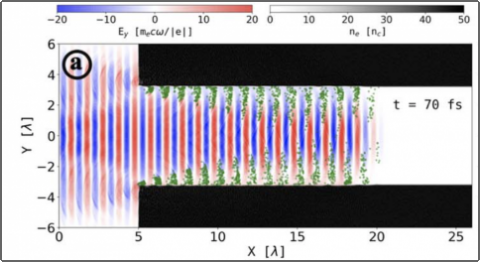Z. Gong, A. P. L. Robinson, X. Q. Yan, and A. V. Arefiev, "Highly collimated electron acceleration by longitudinal laser fields in a hollow-core target", Plasma Phys. Control. Fusion 61 035012 (2019).
The substantial angular divergence of electron beams produced by direct laser acceleration (DLA) is often considered as an inherent negative feature of the mechanism. The divergence however arises primarily because the standard approach relies on transverse electron oscillations and their interplay with the transverse electric fields of the laser pulse. We consider a conceptually different approach to DLA that leverages longitudinal laser electric fields that are present in a tightly focused laser beam. A structured hollow-core target is used to enhance the longitudinal fields and maintain them over a distance much longer than the Rayleigh length by guiding the laser pulse. Electrons are injected by the transverse laser electric field into the channel and then they are accelerated forward by the pulse, generating an electron current. We show that the forces from electric and magnetic fields of this electron population compensate each other, creating a favorable configuration without a strong restoring force. We use two-dimensional particle-in-cell simulations to demonstrate that a low divergence energetic electron beam with an opening angle of less than 5° can be generated in this configuration. Most of the energy is transferred to the electrons by the longitudinal laser electric field and, given a sufficient acceleration distance, super-ponderomotive energies can be realized without sacrificing the collimation.
